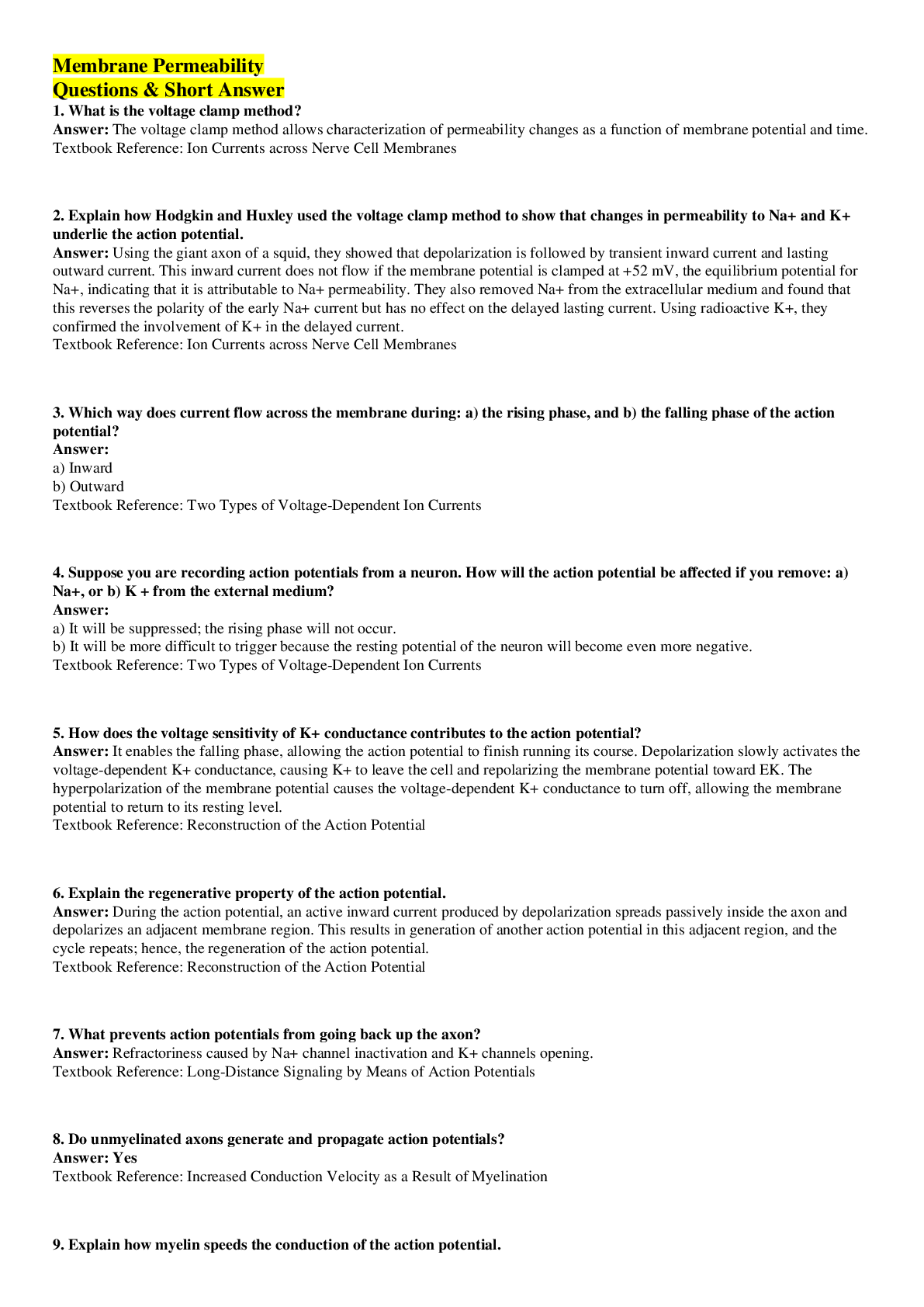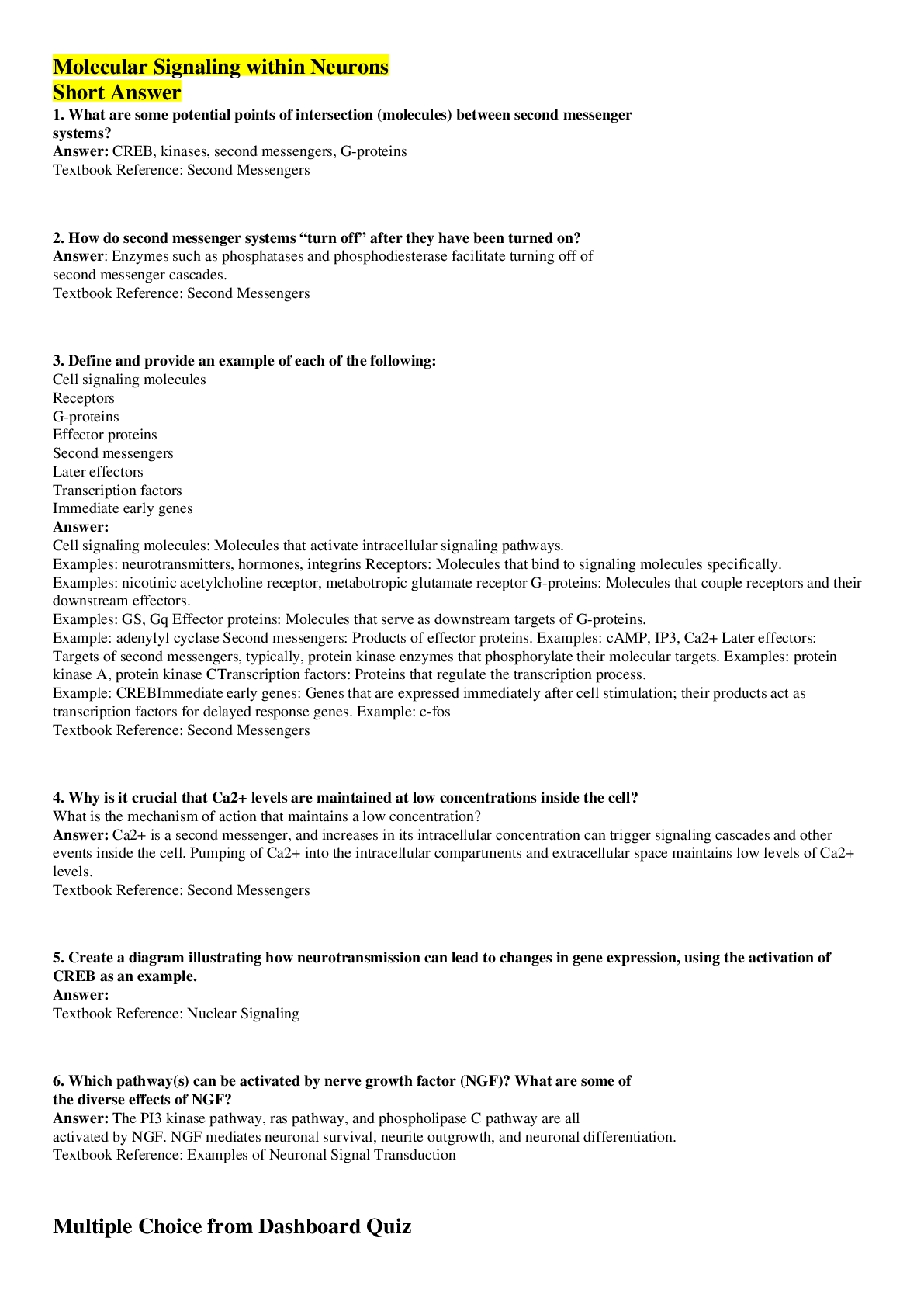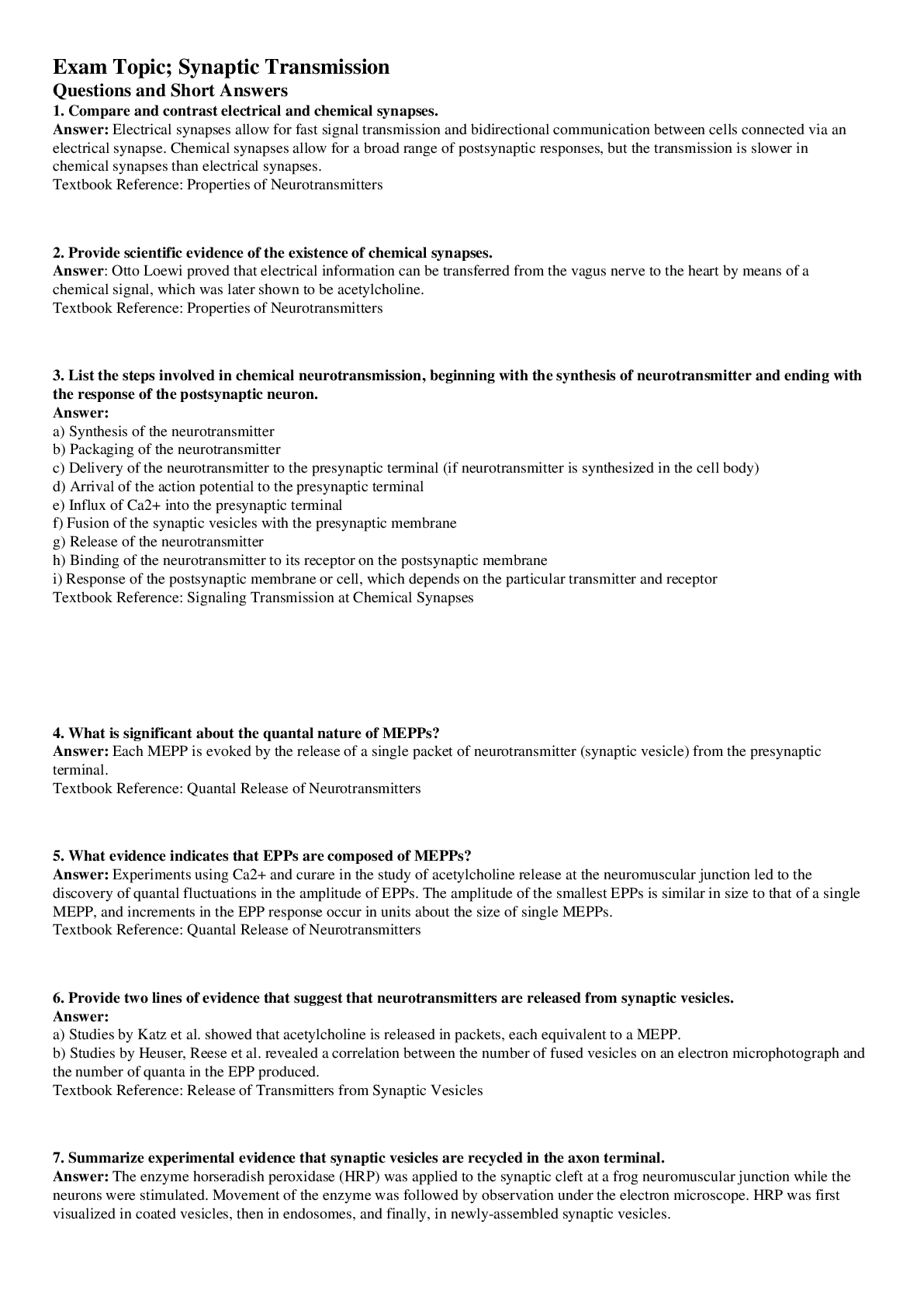BioChemistry > ANSWERS AND COMMENTARIES > Neuroscience - Membrane Permeability (All)
Neuroscience - Membrane Permeability
Document Content and Description Below
1. What is the voltage clamp method? Answer: The voltage clamp method allows characterization of permeability changes as a function of membrane potential and time. Textbook Reference: Ion Currents a... cross Nerve Cell Membranes 2. Explain how Hodgkin and Huxley used the voltage clamp method to show that changes in permeability to Na+ and K+ underlie the action potential. Answer: Using the giant axon of a squid, they showed that depolarization is followed by transient inward current and lasting outward current. This inward current does not flow if the membrane potential is clamped at +52 mV, the equilibrium potential for Na+, indicating that it is attributable to Na+ permeability. They also removed Na+ from the extracellular medium and found that this reverses the polarity of the early Na+ current but has no effect on the delayed lasting current. Using radioactive K+, they confirmed the involvement of K+ in the delayed current. Textbook Reference: Ion Currents across Nerve Cell Membranes 3. Which way does current flow across the membrane during: a) the rising phase, and b) the falling phase of the action potential? Answer: a) Inward b) Outward Textbook Reference: Two Types of Voltage-Dependent Ion Currents 4. Suppose you are recording action potentials from a neuron. How will the action potential be affected if you remove: a) Na+, or b) K + from the external medium? Answer: a) It will be suppressed; the rising phase will not occur. b) It will be more difficult to trigger because the resting potential of the neuron will become even more negative. Textbook Reference: Two Types of Voltage-Dependent Ion Currents 5. How does the voltage sensitivity of K+ conductance contributes to the action potential? Answer: It enables the falling phase, allowing the action potential to finish running its course. Depolarization slowly activates the voltage-dependent K+ conductance, causing K+ to leave the cell and repolarizing the membrane potential toward EK. The hyperpolarization of the membrane potential causes the voltage-dependent K+ conductance to turn off, allowing the membrane potential to return to its resting level. Textbook Reference: Reconstruction of the Action Potential [Show More]
Last updated: 2 years ago
Preview 1 out of 2 pages

Buy this document to get the full access instantly
Instant Download Access after purchase
Buy NowInstant download
We Accept:

Reviews( 0 )
$7.00
Can't find what you want? Try our AI powered Search
Document information
Connected school, study & course
About the document
Uploaded On
Apr 27, 2022
Number of pages
2
Written in
Additional information
This document has been written for:
Uploaded
Apr 27, 2022
Downloads
0
Views
120

















